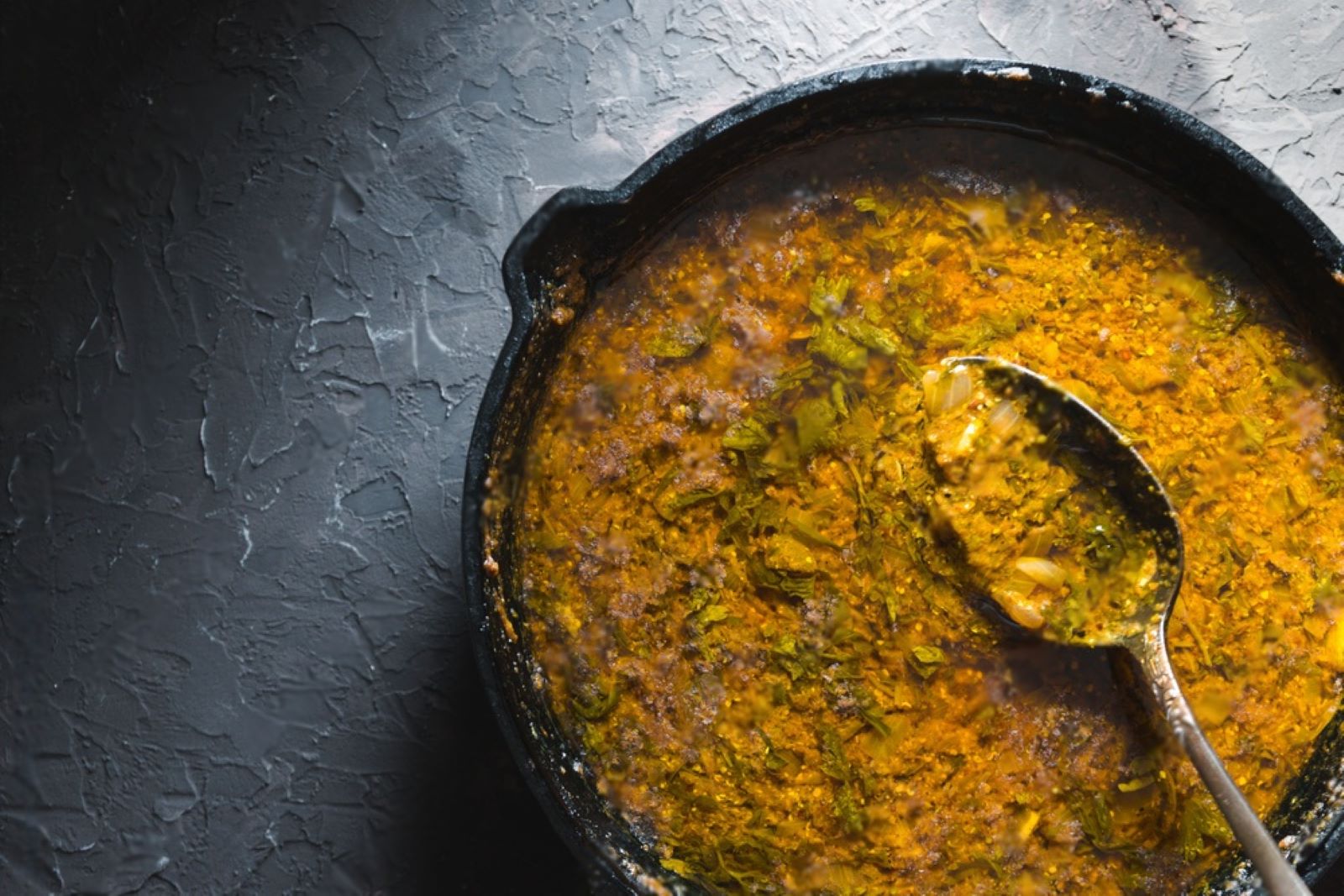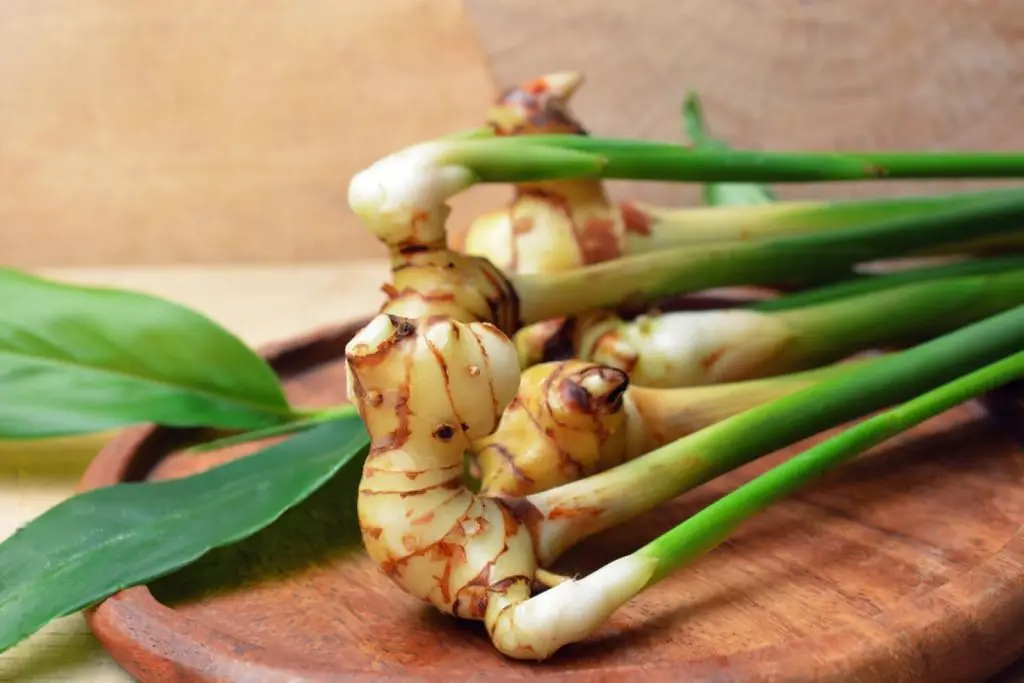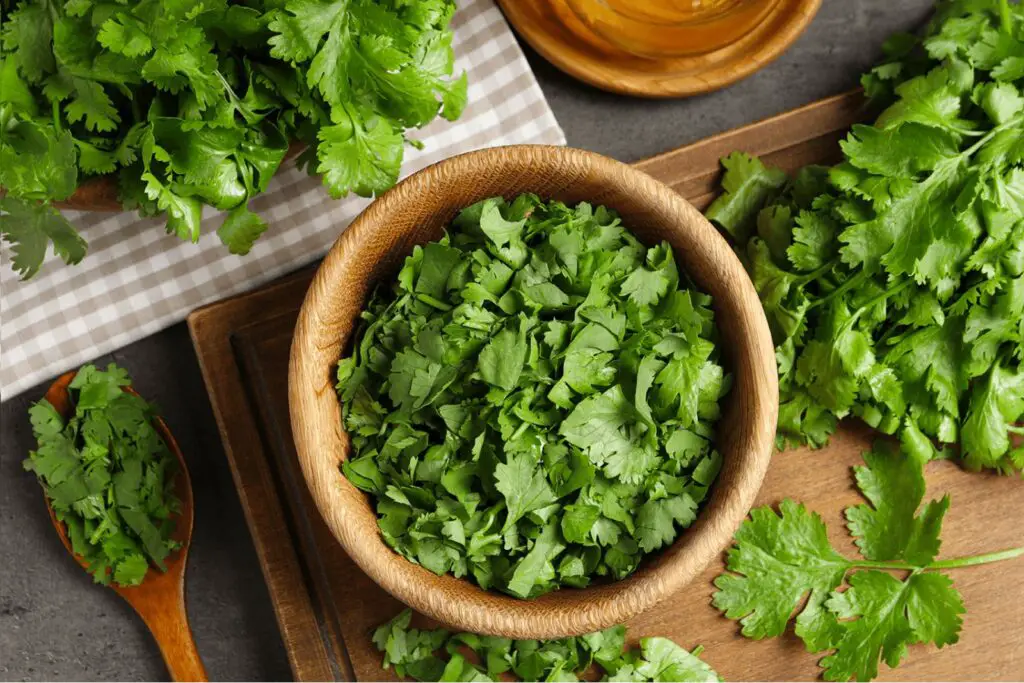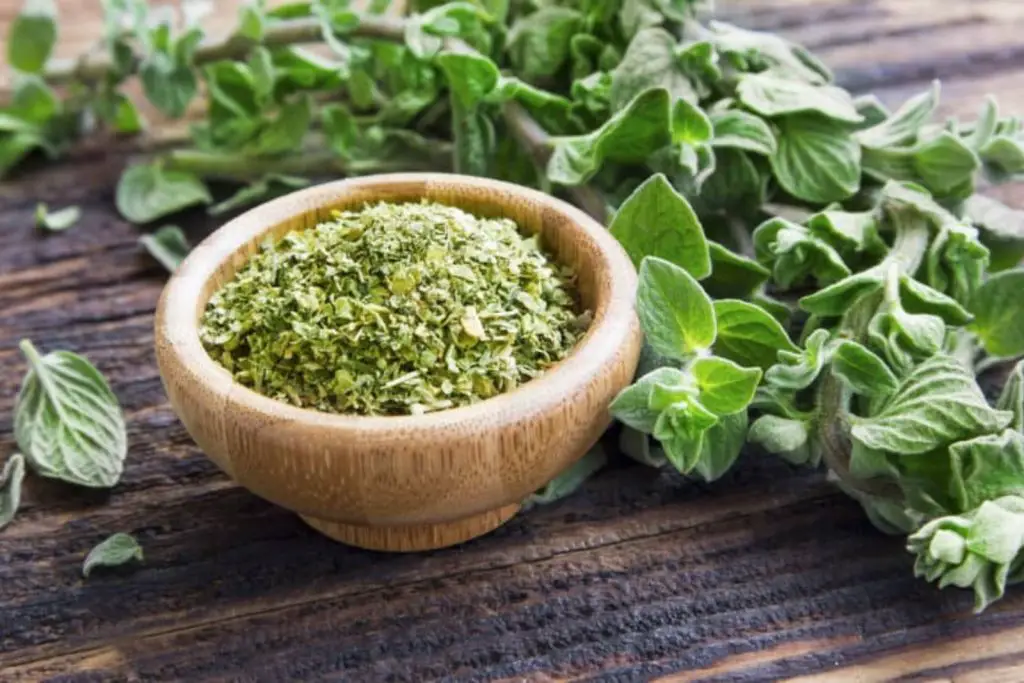
Curry paste is a flavorful and versatile ingredient used in various cuisines around the world. It is a mixture of aromatic spices, herbs, and other ingredients that form the base of many delicious curry dishes. While curry paste is commonly found in stores, making your own homemade version allows you to customize the flavors to your preference. If you find yourself with an excess of curry paste or want to ensure its long-term preservation, freezing is an excellent option. By following a few simple steps, you can freeze curry paste and maintain its taste and quality for future culinary adventures. This article presents a step-by-step guide on how to freeze curry paste effectively.
Here’s a comprehensive guide on freezing curry paste:
Step 1: Prepare the curry paste
Before freezing curry paste, it is crucial to ensure that it is fresh and properly prepared. Whether you decide to make your own curry paste or purchase it from a store, taking the time to prepare it well will enhance its flavor and quality when it’s time to use it.
If you choose to make the curry paste from scratch, gather all the necessary ingredients according to your preferred recipe. Common ingredients include spices like cumin, coriander, turmeric, and chili, as well as aromatic herbs like garlic, ginger, and lemongrass. The specific ingredients and proportions may vary depending on the type of curry paste you are making, such as Thai red curry paste or Indian curry paste.
When making the curry paste, it’s important to ensure that the ingredients are well blended together. Use a blender, food processor, or mortar and pestle to create a smooth and homogeneous paste. This will help distribute the flavors evenly and prevent any lumps or clumps in the final product. Take the time to blend the curry paste thoroughly, scraping down the sides of the blender or food processor if necessary, to achieve the desired texture.
If you have purchased the curry paste from a store, check the expiration date to ensure its freshness. Give the jar a gentle shake to ensure that the paste is still well mixed. If any separation or hardening has occurred, stir it gently with a spoon or fork until it becomes smooth and consistent.
Can I freeze homemade curry paste, or is it better to use store-bought?
You can definitely freeze homemade curry paste with great results. Freezing homemade curry paste allows you to preserve the flavors of your freshly prepared ingredients and have it readily available for future use. However, store-bought curry paste can also be frozen, providing convenience when you need a quick and easy option. The choice ultimately depends on personal preference, availability, and the specific flavors and qualities you desire in your curry paste.
Are there any special considerations for freezing curry paste made with fresh ingredients?
Yes, there are a few special considerations when freezing curry paste made with fresh ingredients. Firstly, it’s important to ensure that the fresh ingredients are properly cleaned, chopped, and blended before freezing. Additionally, some fresh ingredients like herbs or certain spices may lose a bit of their potency or texture after freezing, so you may need to adjust the seasoning or add fresh herbs when using the frozen paste in recipes. Lastly, tightly sealing the curry paste and removing as much air as possible from the container or bag will help preserve its flavors and prevent freezer burn.
Step 2: Portion the curry paste
After preparing the curry paste, it’s important to portion it before freezing. This step ensures that you can easily thaw and use the desired amount of curry paste without having to defrost the entire batch.
Consider the amount of curry paste you typically use in a single recipe. This will vary depending on your personal preferences and the specific dish you’re preparing. By portioning the curry paste accordingly, you can avoid wasting any excess paste and have the right amount available for future use.
Small airtight containers or freezer bags are ideal for storing the curry paste portions. They help protect the paste from freezer burn and maintain its freshness. When choosing containers or bags, make sure they are suitable for freezing and can withstand the low temperatures without cracking or leaking.
Divide the curry paste into convenient portions based on your needs. If you often make small curries, portion the paste into smaller containers or bags. Conversely, if you frequently prepare larger batches of curry, larger portions may be more suitable.
When using containers, spoon the curry paste into each container, leaving some headspace to allow for expansion during freezing. Be sure to seal the containers tightly to prevent air from entering and freezer burn from affecting the paste.
If using freezer bags, transfer the curry paste into the bags and carefully squeeze out any excess air before sealing them tightly. Flattening the bags and removing as much air as possible helps conserve space in the freezer and prevents freezer burn.
Step 3: Transfer the curry paste to containers
Once you have portioned the curry paste, it’s time to transfer it into suitable containers for freezing. The choice of containers depends on personal preference and convenience, with small airtight containers and freezer bags being common options.
If you opt for small airtight containers, use a spoon to scoop the curry paste into each container. Ensure that the containers are clean and dry before transferring the paste. Leave some headspace in each container to allow for expansion as the curry paste freezes. This extra space prevents the containers from cracking or bursting in the freezer due to the expansion of liquids.
When filling the containers, it’s essential to distribute the curry paste evenly and avoid leaving air pockets. Smooth out the surface of the paste and ensure it reaches the edges of the containers. This will help maintain its quality during freezing and prevent freezer burn.
After filling the containers, seal them tightly to create an airtight environment. This prevents air from entering the containers and helps preserve the flavor and texture of the curry paste. Make sure the lids or covers are securely fastened to prevent any leaks or contamination.
Alternatively, if you prefer to use freezer bags, carefully transfer the curry paste into the bags. Squeeze out as much air as possible from the bags before sealing them tightly. Removing excess air helps prevent freezer burn and ensures the curry paste stays fresh for an extended period.
When sealing freezer bags, consider using the double-bagging method for added protection. Place the filled bag inside another bag and seal both bags securely. This provides an extra layer of insulation against freezer burn and helps maintain the quality of the curry paste.
Regardless of the container type you choose, make sure to handle the curry paste with clean hands or utensils to prevent any contamination. This will ensure that the frozen curry paste remains safe for consumption.
Can I freeze curry paste in an ice cube tray for easy portioning?
Yes, freezing curry paste in an ice cube tray is a convenient method for portioning. It allows you to freeze individual servings of curry paste, making it easy to defrost and use only the amount needed for a specific recipe. Once the curry paste cubes are frozen solid, you can transfer them to a freezer bag or airtight container for longer-term storage.
Can I freeze curry paste in glass jars, or should I use plastic containers?
It is generally recommended to use plastic containers when freezing curry paste rather than glass jars. Glass jars may be more prone to cracking or breaking when subjected to extreme temperature changes in the freezer. Plastic containers, on the other hand, are more flexible and less likely to shatter. Be sure to choose freezer-safe, airtight plastic containers that are specifically designed for freezing food.
Step 4: Label the containers
Labeling the containers or freezer bags that hold the frozen curry paste is an important step to help you identify and keep track of the paste in your freezer. By clearly labeling the containers, you can easily find the desired portion of curry paste and ensure that you use them in a timely manner.
When labeling, include essential information such as the contents (curry paste) and the date of freezing. This information serves as a quick reference, allowing you to identify the curry paste without the need to open every container or bag. It also helps you keep track of the freshness of the paste and use the oldest portions first to maintain optimal quality.
Including the date of freezing on the label is particularly important as it helps you adhere to proper food safety practices. Frozen curry paste can typically be stored for several months, but it is recommended to use it within a reasonable timeframe to ensure the best taste and quality. By noting the date of freezing, you can rotate your curry paste supply and prioritize using the older portions first.
Additionally, if you have different types or flavors of curry paste, you may want to specify the specific type on the label. This way, you can easily differentiate between different curry pastes in your freezer and select the one that best suits your recipe.
Using waterproof markers or labels is recommended to prevent smudging or fading when the containers or bags come into contact with moisture or condensation in the freezer. Ensure that the labels are clearly visible and easy to read, even after extended periods of freezing.
Step 5: Store in the freezer
After labeling the containers or freezer bags holding the curry paste, it’s time to properly store them in the freezer. Correct storage ensures the longevity and quality of the frozen curry paste.
When placing the labeled curry paste containers or freezer bags in the freezer, it is important to arrange them in a flat position. This allows for efficient freezing and helps save space in the freezer. Flat positioning also prevents the containers or bags from toppling over or getting damaged during freezing.
Ensure that the temperature of your freezer is set to 0°F (-18°C) or below. Freezing the curry paste at this temperature ensures optimal storage conditions and inhibits the growth of harmful bacteria. Maintaining a consistent low temperature helps preserve the flavors, textures, and overall quality of the curry paste.
Avoid overcrowding the freezer with other items to allow for proper air circulation around the curry paste containers or bags. This promotes even freezing and maintains the integrity of the curry paste.
It is recommended to place the curry paste containers or freezer bags in a section of the freezer where they will not be disturbed or exposed to frequent temperature fluctuations. This helps maintain a stable freezing environment and minimizes the risk of thawing and refreezing, which can affect the quality of the curry paste.
By storing the labeled curry paste containers or freezer bags in the freezer under optimal conditions, you can preserve the flavors and quality of the curry paste for an extended period. This allows you to have a ready-to-use supply of curry paste whenever you need it, ensuring that you can enjoy delicious curries even when the ingredients are out of season or not readily available.
How long can I keep frozen curry paste before it goes bad?
When properly stored in an airtight container or freezer bag, frozen curry paste can typically maintain its quality for up to 3 to 4 months. However, for optimal flavor and freshness, it is recommended to use it within 1 to 2 months. Over time, the flavors may degrade and the paste’s texture may change slightly, so it’s best to consume it within a reasonable timeframe to ensure the best culinary experience. Always check for any signs of freezer burn or off-putting odors before using the frozen curry paste.
Step 6: Thaw and use frozen curry paste
When the time comes to use the frozen curry paste, it’s important to thaw it properly to maintain its quality and ensure it blends seamlessly into your recipes. Here are two recommended methods for thawing frozen curry paste:
Refrigerator thawing:
- Remove the desired portion of frozen curry paste from the freezer. Keep the rest of the portions stored in the freezer for future use.
- Place the frozen curry paste in a covered container or on a plate to catch any condensation.
- Transfer the curry paste to the refrigerator and allow it to thaw slowly overnight or for several hours. Thawing in the refrigerator helps maintain the quality and flavor of the curry paste.
- Once thawed, the curry paste is ready to be incorporated into your recipes as you would with fresh curry paste. Stir it well to ensure that any separated liquids or solids are blended back together.
Microwave thawing:
- If you need to thaw the curry paste more quickly, you can use the defrost setting on your microwave.
- Remove the desired portion of frozen curry paste from its container or bag and place it in a microwave-safe bowl.
- Set the microwave to the defrost setting and follow the manufacturer’s instructions. Thaw the curry paste in short intervals, pausing to stir and check its progress.
- Be cautious not to overheat the curry paste, as this can cause it to become too hot or unevenly heated.
- Once thawed, give the curry paste a thorough stir to ensure it is well mixed and ready to use.
Regardless of the thawing method you choose, it’s important to handle the thawed curry paste safely and hygienically. Use it promptly in your recipes to prevent any potential bacterial growth.
Other related questions
Can I refreeze previously thawed curry paste?
It is generally not recommended to refreeze previously thawed curry paste. Each time you thaw and refreeze the paste, it undergoes temperature fluctuations that can affect its texture, flavor, and overall quality. These repeated cycles of freezing and thawing can lead to moisture loss, changes in consistency, and potential degradation of flavors. To maintain the best quality, it’s advisable to portion the curry paste before freezing and only thaw the amount needed for immediate use.
How do I know if my frozen curry paste has gone bad?
There are a few signs to look for to determine if your frozen curry paste has gone bad. Firstly, check for any significant changes in color or appearance. If the paste has developed unusual discoloration, mold growth, or an off-putting odor, it is likely spoiled. Additionally, if the texture has become significantly grainy or watery, it may indicate that the paste has degraded. Trust your senses and if anything seems off, it’s best to err on the side of caution and discard the curry paste.
Can I use frozen curry paste with the fresh ones?
Yes, you can use frozen curry paste alongside fresh ones in your recipes. The frozen curry paste can be a convenient option for when you don’t have the time or ingredients to make fresh paste from scratch. However, it’s important to note that the texture and flavors of frozen curry paste may differ slightly from freshly made paste. Adjust the quantities accordingly to balance the flavors and consider incorporating the frozen paste earlier in the cooking process to ensure it fully blends with the other ingredients.
Should I portion out the curry paste before freezing it?
Yes, it is generally recommended to portion out the curry paste before freezing it. By dividing it into smaller portions, you can easily thaw and use only the amount needed for a particular recipe without having to defrost the entire batch. This helps in reducing waste and allows for more flexibility in portion control. Additionally, smaller portions tend to thaw more evenly and quickly compared to larger containers of frozen curry paste.
Does freezing curry paste alter its spiciness or heat level?
Freezing curry paste can potentially slightly alter its spiciness or heat level. The freezing process may cause the flavors and heat to mellow out or become less intense compared to fresh paste. However, the exact extent of this change can vary depending on the specific ingredients and recipe used. It’s recommended to adjust the seasoning and spice levels when using frozen curry paste to ensure the desired level of spiciness in your dishes.
Is it safe to freeze curry paste that contains dairy or coconut milk?
It is generally safe to freeze curry paste that contains dairy or coconut milk, but it’s important to note that the texture and consistency may change slightly upon thawing. Freezing can cause the dairy or coconut milk to separate or become slightly grainy. To minimize this, ensure that the curry paste is well-mixed before freezing, and give it a thorough stir or whisk after thawing to reincorporate any separated ingredients. The flavors should still be preserved, but the texture may be slightly different.








